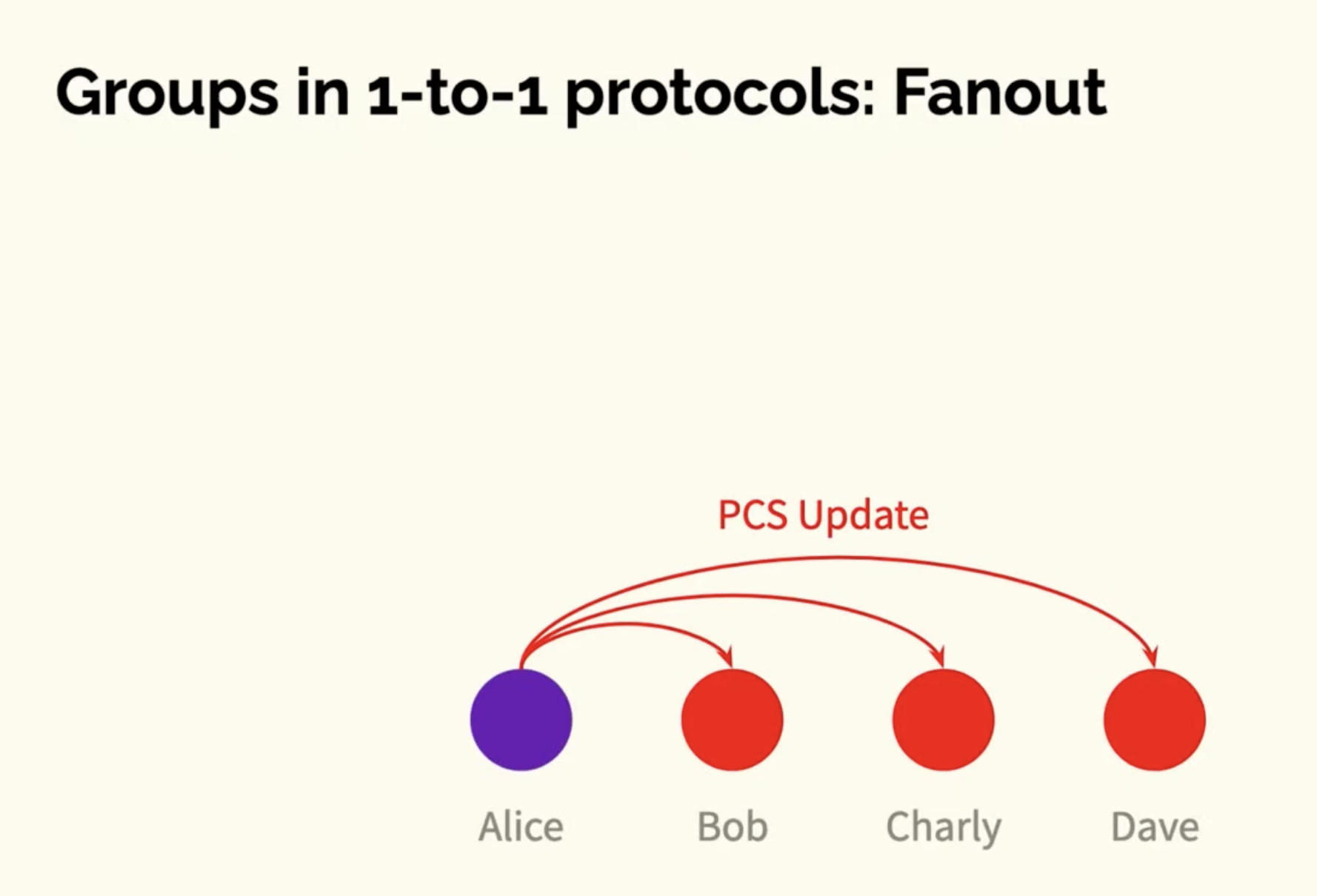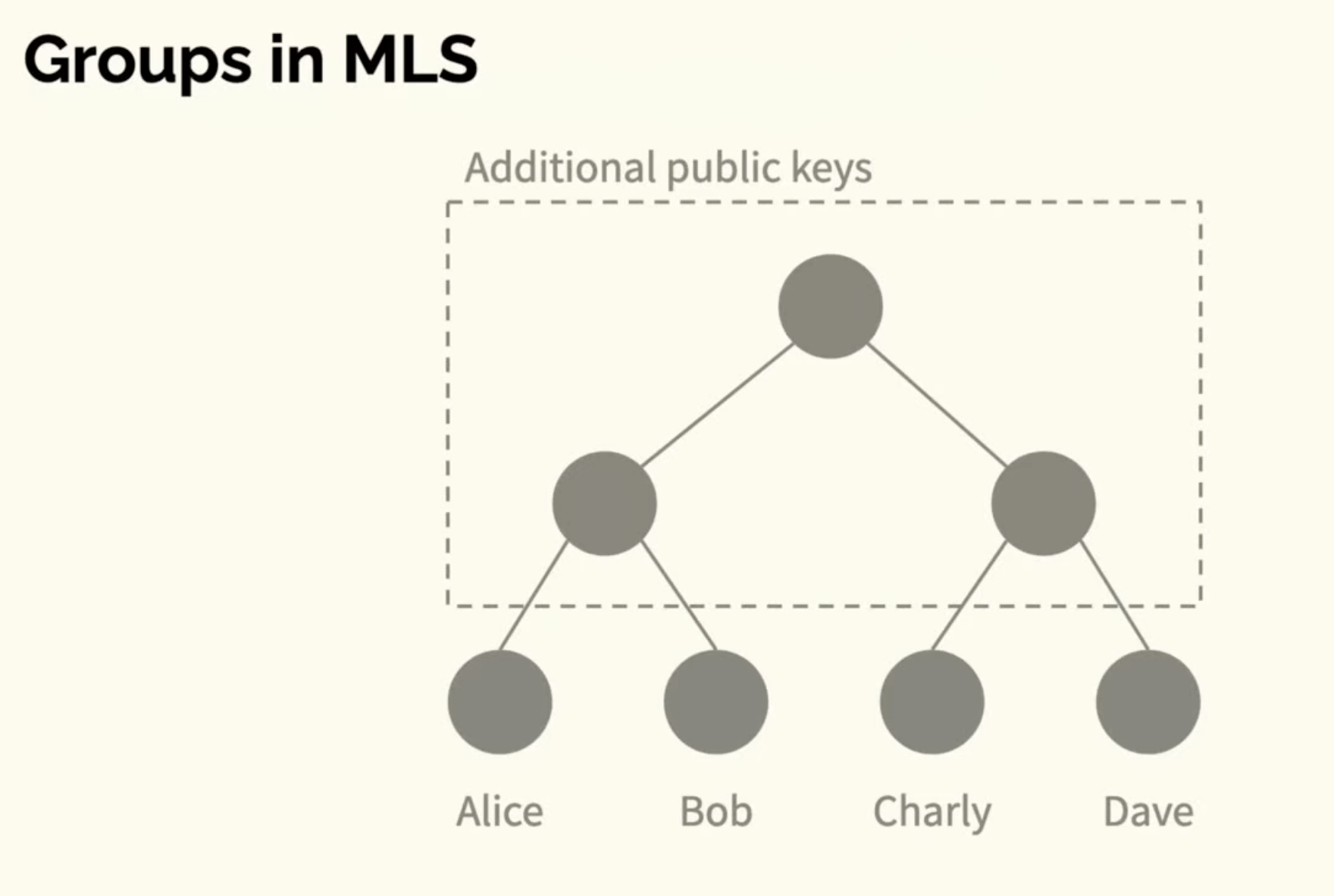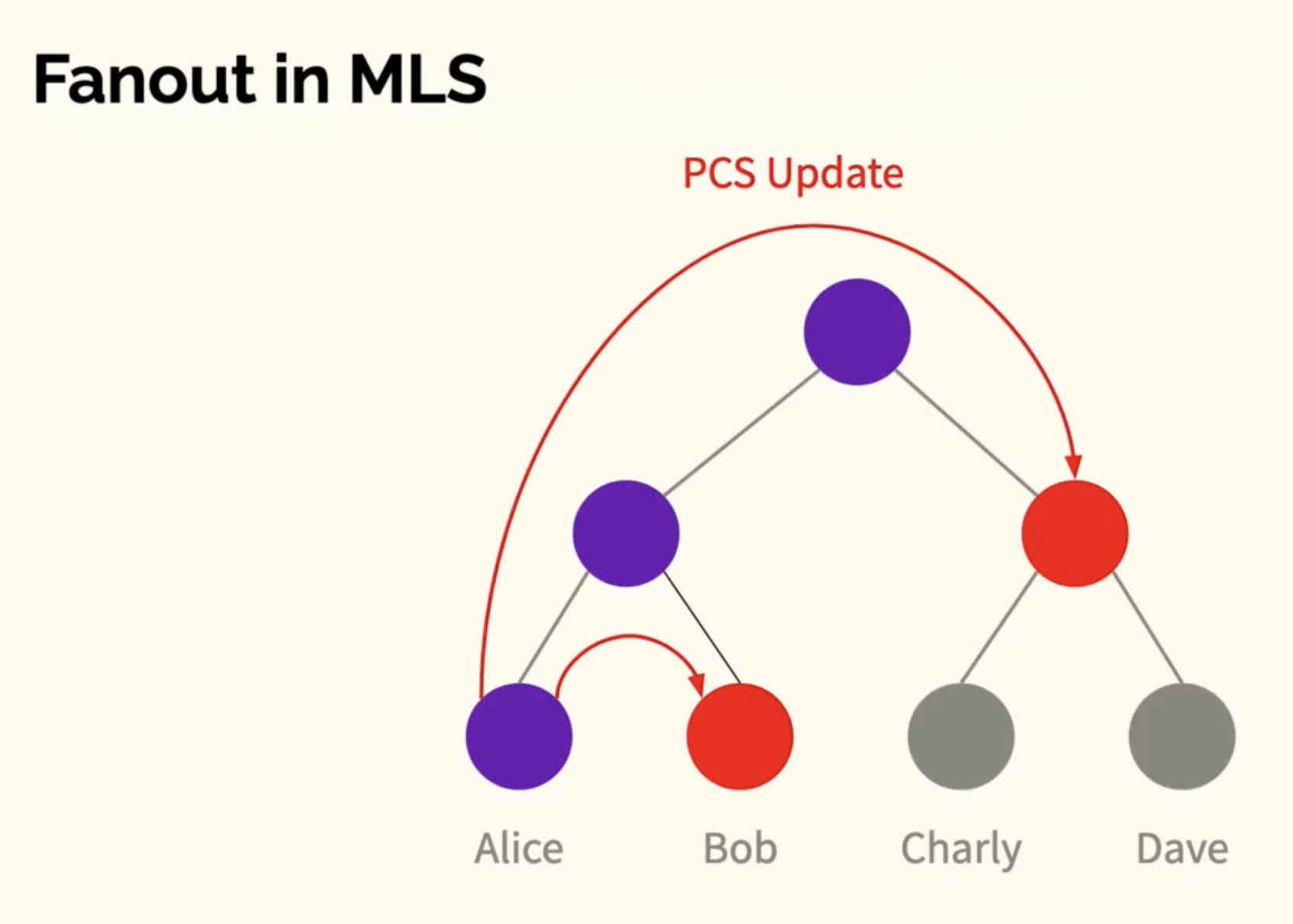Messaging Layer Security
Comes after Signal protocol introducing cryptographic guarantees on a few new properties:
-
agreement on group state
-
informal: Transcript consistency^1
Other properties:
- extensibility
As well as what are now standard expectations:
-
confidentiality
-
authenticity
How is MLS designed?
-
Initial idea: Asynchronous Ratcheting Trees
-
Designed with IETF
-
Similar process to TLS 1.3, involving academia
Architecture
Besides the client, MLS requires two additional services:
-
authentication service - for credentials
-
delivery service - for message ordering
These are 'abstract' services; 'parts of the service could be run on the client'. Message ordering could be a distributed algorithm (like Conflict-Free Replicated Data Types?)


Each participant at the leaf nodes has shared keys with all nodes in the path up to the root

Quantum example of benefits of log updates

Operations:
-
add
-
remove
-
update
-
send application messages
Application messages are encrypted using the key at the root
Continuous Group Key Agreement
Papers:
Continuous Group Key Agreement with Active Security
A More Complete Analysis of the Signal Double Ratchet Algorithm
How to Hide MetaData in MLS-Like Secure Group Messaging - Simple, Modular, and Post-Quantum
On the Insider Security of MLS
DeCAF - Decentralizable CGKA with Fast Healing
Key Agreement for Decentralized Secure Group Messaging with Strong Security Guarantees
A Concrete Treatment of Efficient Continuous Group Key Agreement via Multi-Recipient PKEs